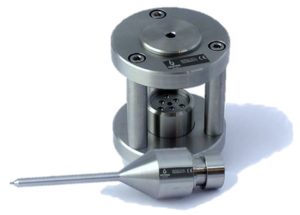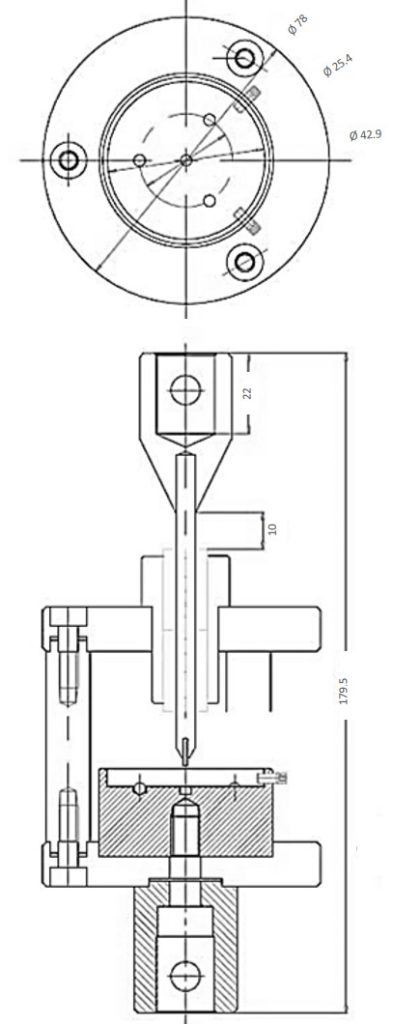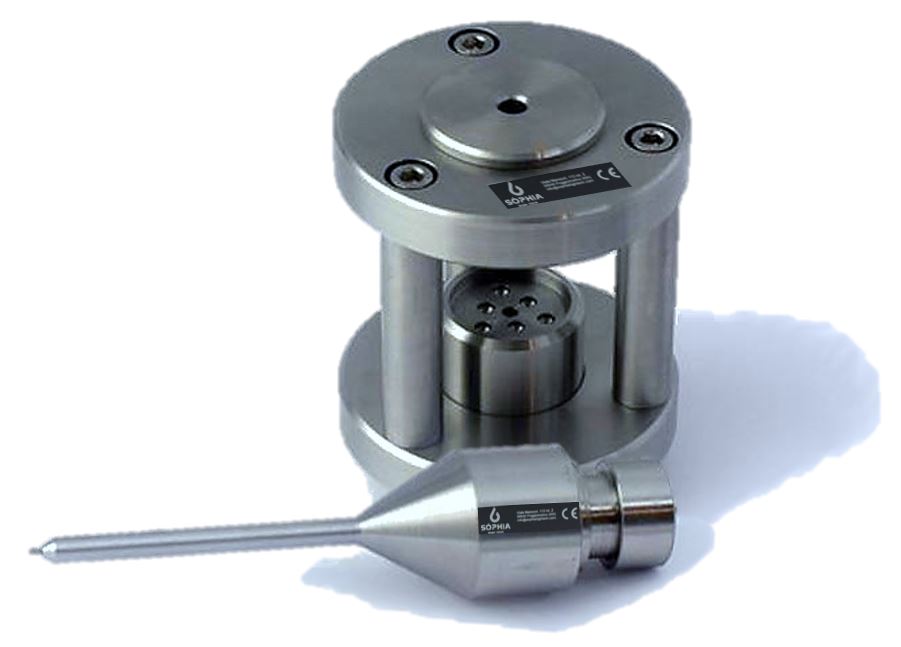
A ring supports thin circular disks of a monolithic ceramic material, or a whisker- or particle-reinforced ceramic matrix composite. These disks are loaded by a smaller diameter concentric ring, a so-called ring-on-ring loading.
Thickness and material of the sample determine the required diameter of the support and loading ring.
The specimen surfaces must be very flat , or a relatively thick sheet of a compliant material in order to attain a uniform load distribution. As another way to achieve the uniform charging, the charging head is articulated, being it is supported by a spherical seat.
This test method is gaining in popularity despite concerns regarding the uniform load.
Another, much older ASTM test method, ASTM F 394 , first introduced in 1974, is still occasionally used, in spite of being discontinued by ASTM in 2001. 1.25″ diameter thin disk of the ceramic material to be tested is supported on three 0.125″ diameter balls equally spaced around a 1″ diameter circle.
The minimum thickness of the specimen must be such that its center deflection at failure does not exceed one-half the specimen thickness.




